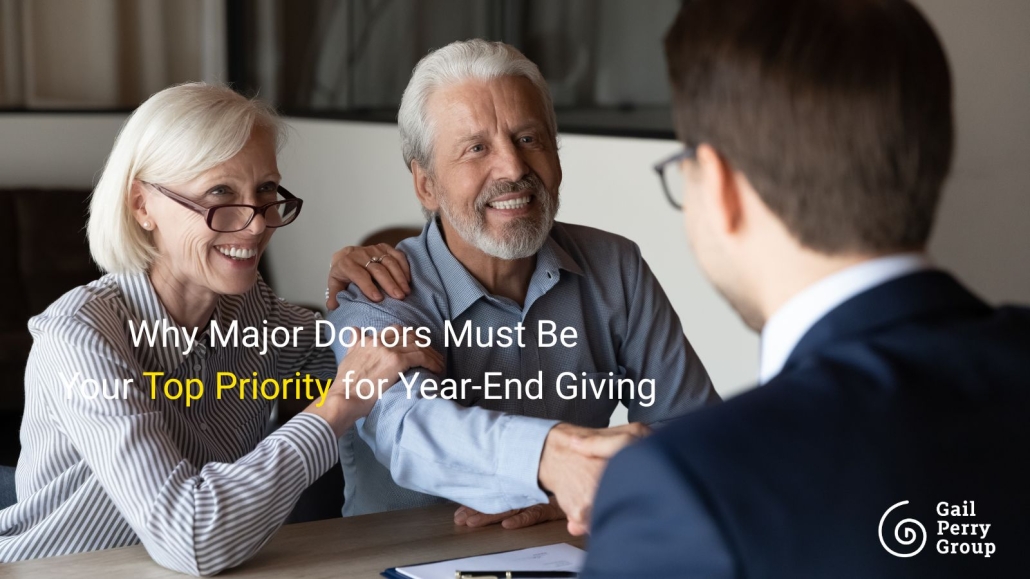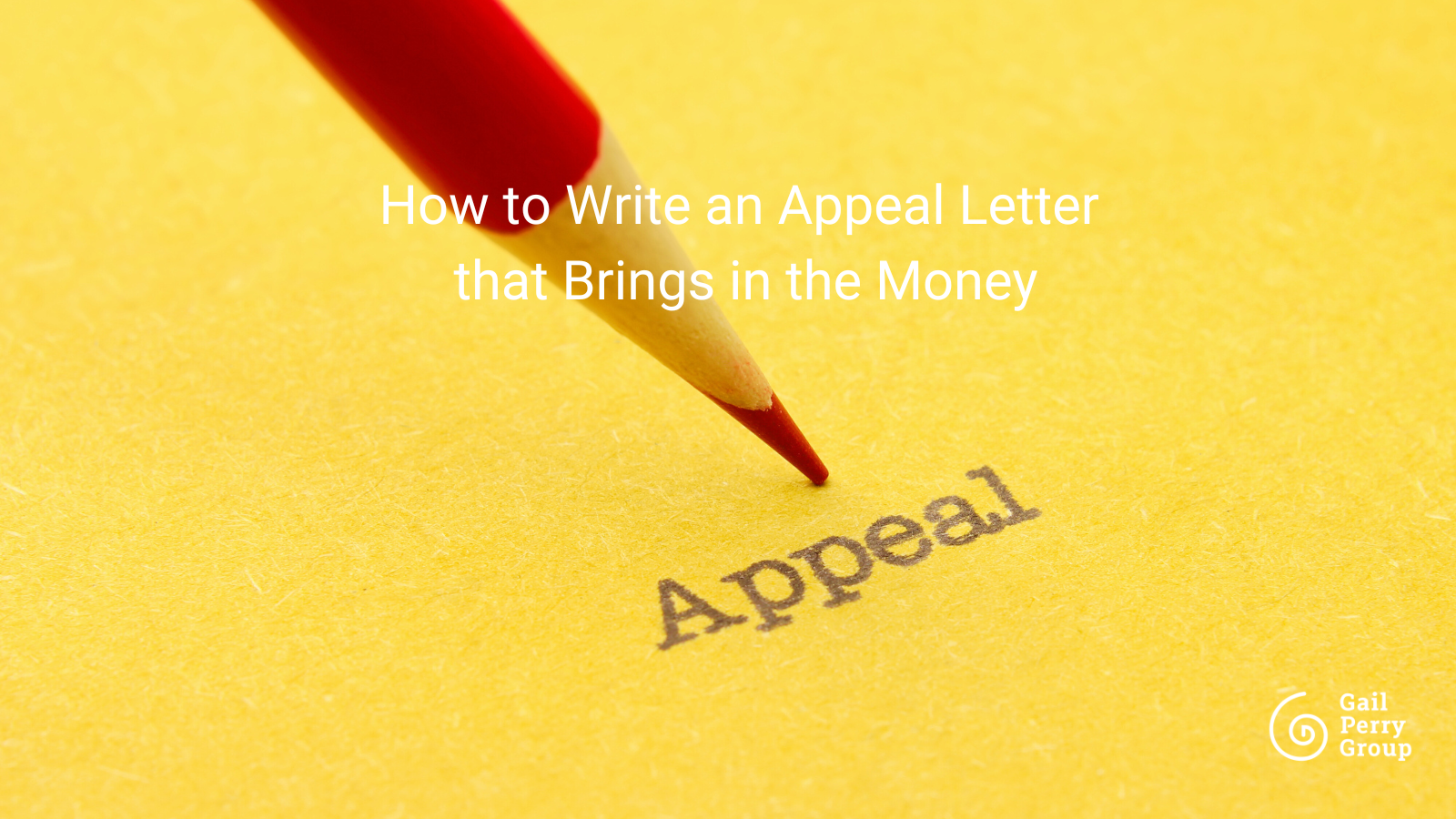
As your organization approaches the end of the fundraising year, this is the moment when strategic focus truly pays off.
Your major donors may well hold the key to your team’s year-end success.
They are your most loyal partners – people who believe deeply in your mission and trust your leadership. And right now, they offer the greatest potential to help your organization finish the year strong.
Fundraising Year-End Strategy: Focus on Leadership Donors Who Have Not Renewed
Year-end is full of opportunity. Donors are thinking about their giving priorities, and many are ready to make one more meaningful contribution before December 31.
That’s why now is the time for teams to take a close look at the possibilities in your donor pipeline.
The major donor portfolio isn’t just a spreadsheet – it’s an opportunity map.
When you review it with fresh eyes, it’s probably easy to see where the biggest potential lies: leadership donors who are about to lapse, and others who may be open to a year-end upgrade.
With this kind of focus, you and your team can turn insight into action – and capture the full potential of the most generous season of the year.
Major Donor Engagement: The Key to Year-End Success
At this time of year, your organization’s major donors are:
- Already invested. They don’t need convincing. They’ve made gifts before because they trust your leadership and believe their giving makes a difference.
At year-end, they’re thinking about their charitable priorities – and that makes this the right moment to reach out personally.
- Expecting to be invited. Donors who give at a higher level often anticipate being asked to participate in the year-end push. They want to help you reach your goals.
When you approach them thoughtfully, they see it as a chance to reaffirm their commitment – not as pressure.
- Looking for connection and meaning. Don’t forget: these conversations aren’t just about dollars; they’re about impact and the donor’s personal values.
Start with gratitude and thank them sincerely for what they’ve already made possible. Then, show them what’s still needed and how their renewed support could move your mission forward in a big way.
When your team shares your current progress – perhaps even a potential shortfall – they are offering transparency and an invitation. It’s not just asking for help.
You’re inviting them to step back into leadership, to be part of closing the year on a high note. A simple, confident invitation can make all the difference:
“Would you consider renewing your leadership gift now to help us finish the year strong?”
Who Belongs on Your Year-End Call List
Once you’ve identified your key major donors, it’s time to get strategic about where to focus your energy. Not every donor needs to be part of personalized year-end outreach.
The goal is to prioritize the individuals who can make the biggest difference right now.
Here’s where to start:
- Major donors who gave last year but haven’t yet given this year (LYBUNTs).
This is absolutely your top list. These donorsare some of your most promising prospects.
Don’t let them slip away! They just need a thoughtful reminder and a clear opportunity to renew. A warm, personal touch can easily bring them back into the fold before year-end.
- High-capacity donors with strong interest.
These are the individuals who have both the means and the motivation to make a difference.
If you’ve been cultivating a relationship throughout the year, now’s the perfect time to check in, share an update, and invite them to help you finish strong.
- Your top 10–15 leadership donors.
A small group of major investors often drives a significant share of results. Strategic conversations at this level can produce six- and seven-figure gifts that change your year-end outcome. These key supporters are the ones who can truly move the needle.
Key takeaway: Remember, year-end fundraising isn’t about calling everyone.
It’s about calling the right people – the ones who are already leaning in, already invested, and ready to help you reach your year-end goal with momentum.
Donor Stewardship at Fiscal Year-End
Not every donor will say yes – and that’s ok. part of smart year-end fundraising. What matters most is the connection you create.
Each call or message is a chance to strengthen a relationship. Even when a donor doesn’t give this time, they remember your gratitude and sincerity. That kind of care builds trust – and often leads to future generosity.
Good stewardship now sets the stage for next year’s success. It reminds your supporters that they’re partners in your mission, not just transactions at the end of your fiscal year.
Not every donor will say yes – and that’s ok. What matters most is the connection you create.
Each call or message is a chance to strengthen a relationship. Even when a donor doesn’t give this time, they remember your gratitude and sincerity. That kind of care builds trust – and often leads to future generosity.
Good stewardship now sets the stage for next year’s success. It reminds your supporters that they’re partners in your mission, not just transactions at the end of your fiscal year.
Year-End Fundraising Strategy Checklist
As the year wraps up, this is your moment to focus on the donors who can make the biggest difference – especially your major donors whose annual gifts are about to lapse.
- Start with your loyal major donors. Look for those who gave last year but haven’t yet renewed. These donors already believe in your work. A personal call now can easily bring them back on board before December 31.
- Spot donors at risk of lapsing. Don’t assume silence means disinterest. Many donors simply haven’t gotten around to giving. A warm reminder – especially from someone they know – can prompt an immediate response.
- Prioritize by capacity and connection. Focus on donors who have both the means and the motivation to step up again this year.
- Assign clear relationship owners. Make sure every key donor has a staff or volunteer partner responsible for follow-up.
- Reach out personally to your leadership donors. A short conversation or visit before year-end can unlock transformative gifts.
- Track progress daily. Share updates with your board and leadership team so everyone stays aligned on the goal.
- Say thank you quickly. Every personal acknowledgment strengthens the relationship and sets you up for success in the new year.
This is the moment when personal outreach can yield real results. A handful of timely, heartfelt conversations with your best donors can close the gap – and set the tone for a strong start next year.
The Bottom Line for Year-End Fundraising Strategies
Year-end is when focus really pays off. The biggest opportunity right now is your loyal donors – especially those who gave last year but haven’t yet renewed.
These supporters already believe in your mission. They’re familiar with your impact. And they often just need a personal nudge to make their annual gift before December 31.
This is not about pressure. It’s about connection. A simple, heartfelt call can remind them why they care – and why their continued support matters right now.
When you combine smart portfolio management with genuine gratitude, you create the right mix of urgency and warmth. You’ll close more renewals, re-engage your best donors, and finish your year with strong results and renewed energy.
So pick up the phone. Thank your donors. Invite them to be part of your year-end success story.
You’ll strengthen relationships now – and build momentum that carries well into the new year.
Talk with our team about how Gail Perry Group helps organizations build clarity, confidence, and momentum through expert fundraising consulting. Click here to schedule a call.













